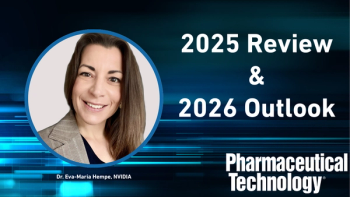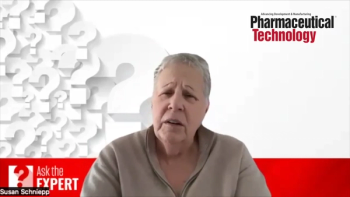
- Pharmaceutical Technology-05-02-2017
- Volume 41
- Issue 5
Transforming Regulatory Data Management
The Identification of Medicinal Products (IDMP) standards requires regulatory teams to efficiently collate data from multiple sources and functions.
A surge of change is underway in regulatory information management (RIM) as life-sciences companies re-evaluate their global operating capabilities. A report (1) by Gens and Associates shows that many organizations are embarking on significant transformation initiatives. Mounting pressure to operate more efficiently worldwide is driving companies to harmonize processes, improve data quality, and adopt shared global systems. For many, the spark of this movement is the Identification of Medicinal Products (IDMP) standard that requires regulatory teams to collate data from multiple sources and functions.
The accelerating pace for change
Industry analyst Steve Gens has been following RIM trends for more than a decade and has captured significant changes in a Gens and Associates report (1)
Pursuing World Class Regulatory Information Management (RIM); Strategy, Measures, and Priorities. A dramatic 86% are embarking on transformational change in one or more of the 17 regulatory capabilities tracked. According to the survey, 41% of large- and mid-sized companies plan to change their submissions content management systems within the next two years; 65% are changing their submission planning systems, and 73% are changing systems for managing health authority interactions.
Regulatory transformation initiatives are also bigger and broader than they used to be. Gens noted in the report that historically, companies would incrementally upgrade their regulatory capabilities with individual change initiatives. Today, however, regulatory change is treated as an end-to-end programme involving personnel from clinical, quality, and manufacturing divisions. Companies are reinforcing their new RIM strategy with organizational changes; for example, 45% of companies report implementing end-to-end process ownership and governance roles.
Generally, companies are pursuing four key goals:
- Global harmonization. There has been and continues to be a shift toward standardized systems with a common RIM model. According to Gens, companies are moving from a disparate RIM model where systems vary by geography or product, to a common RIM model in which they use shared global systems, and are taking a more holistic approach in managing regulatory processes globally. The new research shows that companies with a common RIM model are 3.5 times more likely to realize business benefits compared to those with disparate RIM environments. Companies with a common RIM model are also 18% more efficient than their competitors with disparate RIM systems and have 2.5 times more confidence in the quality of their data.
- Data quality. The quality and reliability of data is also a top priority in RIM transformation. Today, companies need to check and re-check information anytime they use it, which is a heavy burden. Regulatory teams spend a lot of time verifying information before it goes to health authorities or senior management. Accordingly, 88% of respondents are currently changing or planning a change to their data management capabilities within the next two years.
- Efficiency. A third force driving transformation is the desire for greater efficiency and productivity. One measure of efficiency is the time needed to provide accurate reporting for basic regulatory questions-such as the status of a label change in an affiliate office. Half of the participating companies took days or weeks to provide accurate answers. Given the historic focus on compliance, it is not surprising that few companies measure RIM efficiency, but that is now changing.
- Collaboration. A fourth priority is improving processes connecting regulatory with other functional areas. A manufacturing change, supply release, or label change are three collaborative processes hampered by poor data quality and accessibility. Inefficiencies in cross-functional collaboration are particularly concerning because they often introduce compliance gaps. IDMP requirements have forced these separate departments to get aligned around data, and process improvement is a natural component of those conversations.
A case study of regulatory transformation
Improving RIM efficiency and meeting IDMP standards share many of the same requirements: quality data, global alignment, and collaboration not just between departments but also with outsourced partners. The opportunity to innovate and achieve these goals is greater today than it has been in the past decade.
For example, by modernizing their RIM capabilities, UCB, a multinational biopharmaceutical company, has improved the efficiency and agility of the business and translated data quality into patient value. To begin, UCB formed a cross-functional team and outlined six core objectives. Within each, UCB focused narrowly on what was business-critical and would provide real patient value, recognizing that with a strong foundation in place, it would be able to scale up and address additional IDMP data points as needed. UCB’s six core objectives for RIM transformation include:
- Data collection monitoring. The company sought to create a routine monitoring framework that would ensure the completeness, accuracy, and timeliness of updates to product license information.
- Information availability. While regulatory traditionally works behind closed doors, UCB decided to make regulatory information more widely available internally. They started with the supply release process to fully ensure that product in market matches the regulatory file.
- Unified regulatory processes. Historically, regulatory professionals have thought in terms of individual software applications instead of end-to-end processes. For example, document management is often seen as a separate process from registration tracking. UCB is developing an interactive process map that is system agnostic, with the aim to go from submission planning to archiving without logging into multiple systems.
- Document and data collection remediation. Locating the source materials for IDMP data collection is a frustration. All too often, the needed documents are located at an affiliate or a partner company. UCB now has an ongoing programme collecting all of the source documents, extracting the information, and converting it into data.
- Master data management. UCB started by mastering a small handful of data fields. It identified fields that were frequently duplicated between systems and would deliver significant business value if standardized and shared, including: product name, strength, formulation, and country.
- Operating model optimization. Once data flows and systems are running smoothly, UCB could evaluate the overall operating model to optimally maintain these data. A number of regulatory activities have been outsourced. Because reliable performance was required, document management was moved to the cloud and supporting processes were put in place.
Conclusion
Companies may have once balked at the effort involved in standardizing systems, processes, and data globally. It is, however, increasingly clear that the gains in operating efficiency and regulatory effectiveness will generate a positive return and have motivated many to embark on their own transformation initiatives.
Reference
- Gens and Associates, Pursuing World Class Regulatory Information Management (RIM); Strategy, Measures, and Priorities (September 2016).
John Lawrie is vice-president of product strategy for the Veeva Vault RIM suite of applications.
Article Details
Pharmaceutical Technology Europe
Vol. 29, No. 5
May 2017
Pages: 10–11
Citation: When referring to this article, please cite it as J. Lawrie, “Transforming Regulatory Data Management,” Pharmaceutical Technology Europe 29 (5) 2017.
Articles in this issue
over 8 years ago
The Complexity of IDMPover 8 years ago
Optimizing Yields on Modern Tablet Pressesover 8 years ago
Robots Package Parenteral Productsover 8 years ago
Combination Products Raise New Manufacturing Challengesover 8 years ago
Engaging with Interest Groups or Industry Associationsover 8 years ago
CMOs and CROs Have Different Trajectoriesover 8 years ago
Catalysis, Flow Chemistry Impact API Manufacturingover 8 years ago
Keeping an Eye on Qualityover 8 years ago
MACRA and Value-Based Contractsover 8 years ago
Innovating in a Value-Based WorldNewsletter
Get the essential updates shaping the future of pharma manufacturing and compliance—subscribe today to Pharmaceutical Technology and never miss a breakthrough.




